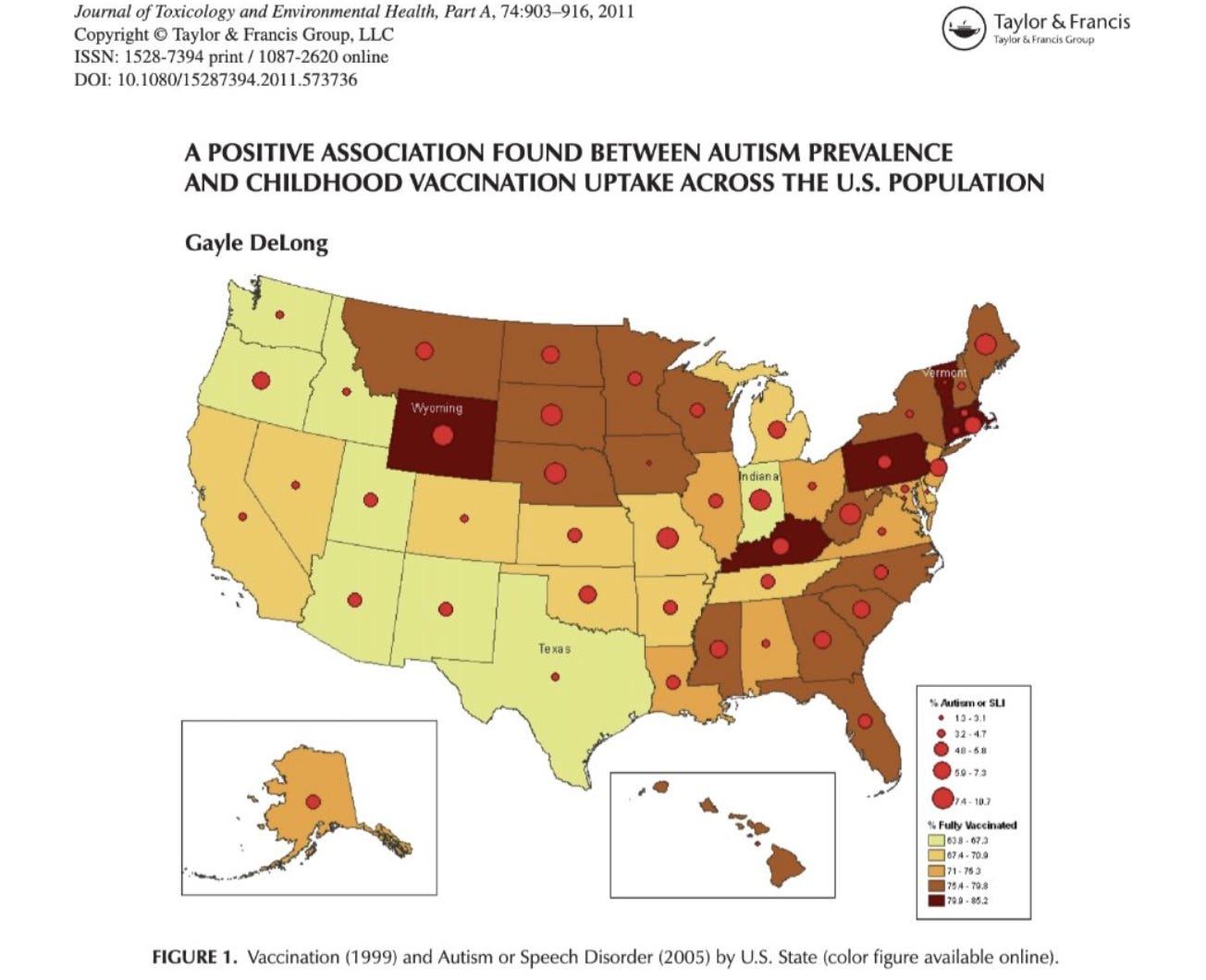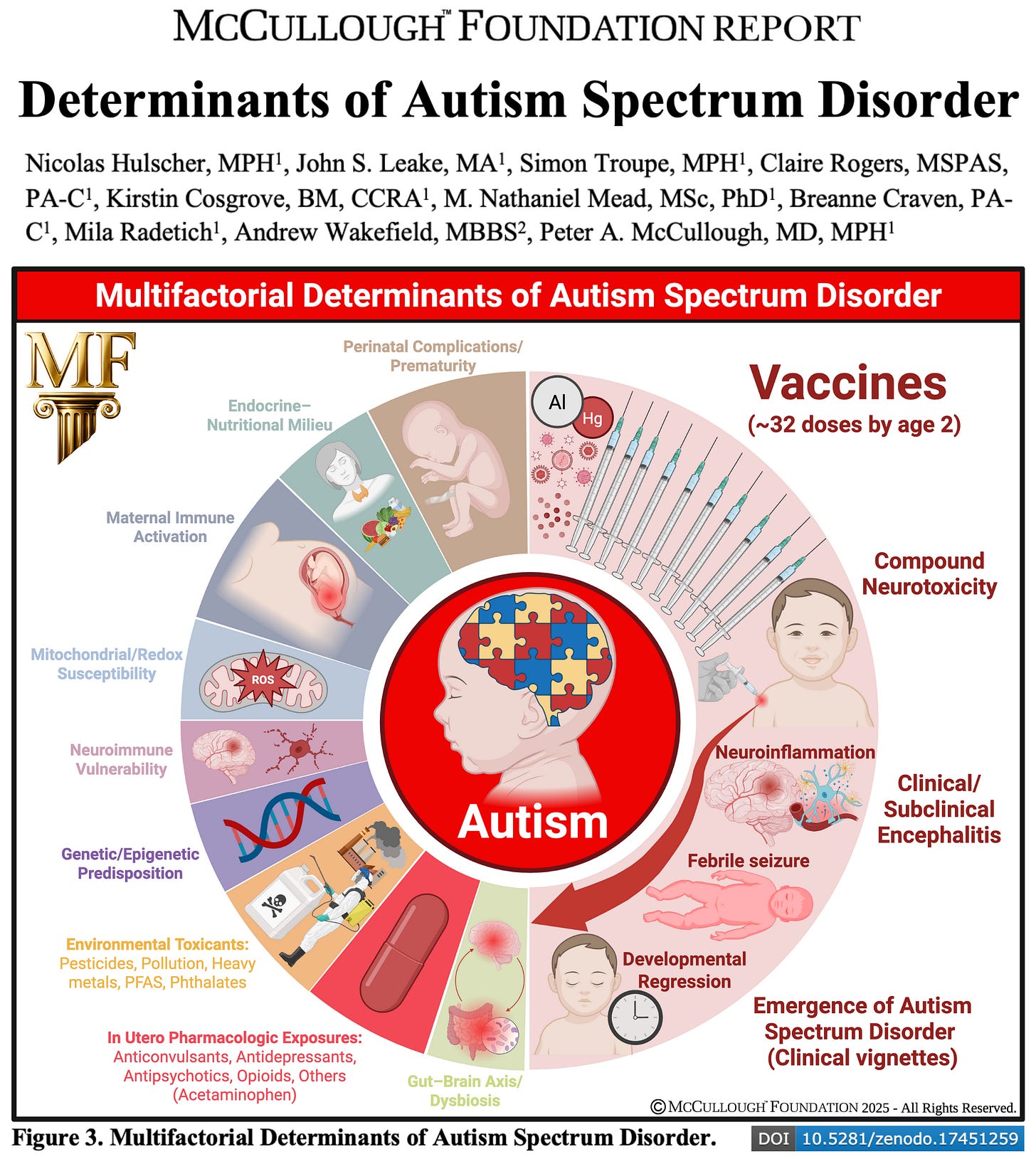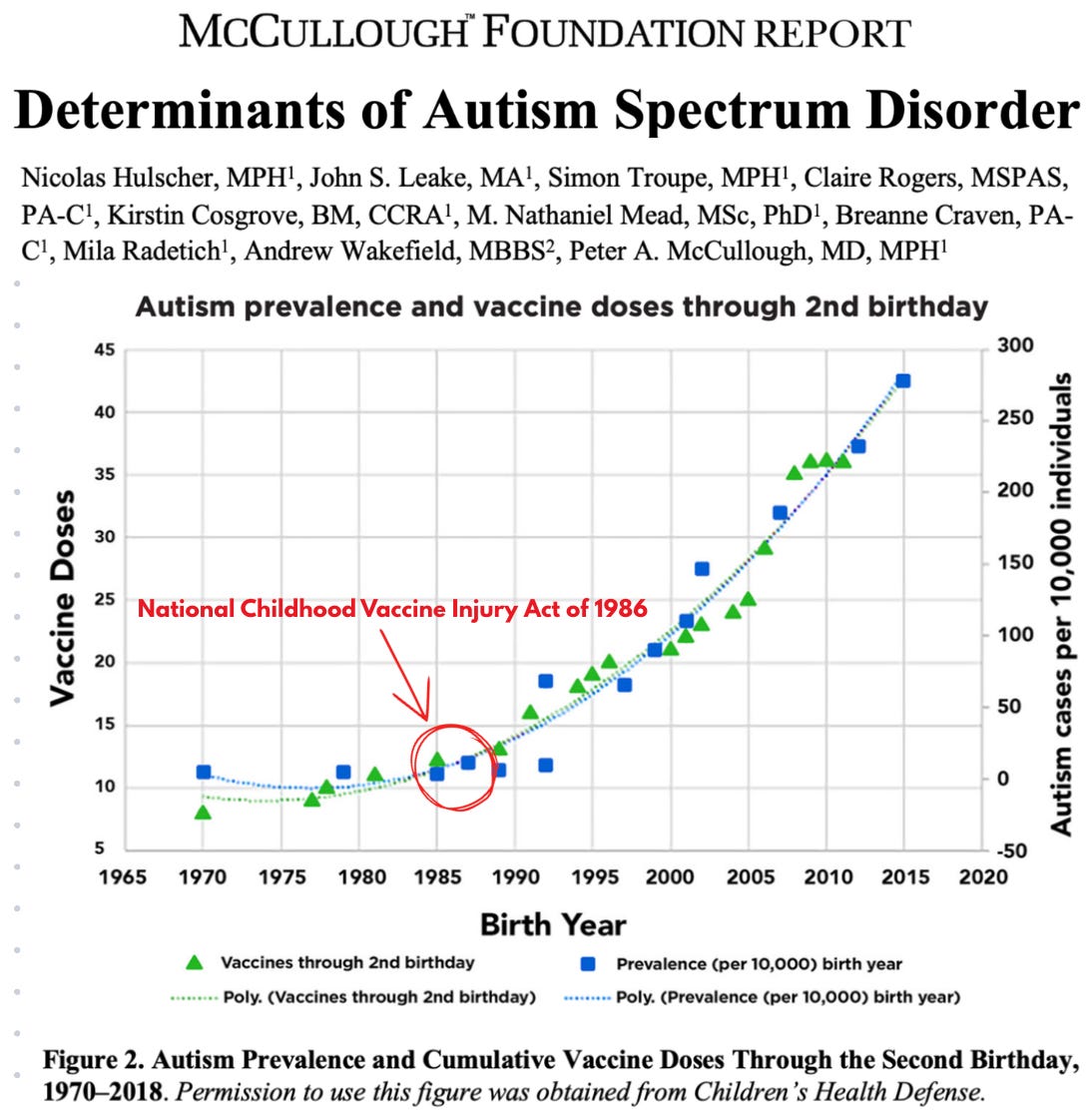NEW STUDY: Infant Vaccine Intensity Strongly Predicts Autism Rates Worldwide
Across countries on three continents, a 1% increase in vaccine types before age one corresponded to a 0.47% increase in autism prevalence.
A new cross-national study from Italy’s National Research Council, spanning multiple developed countries across three continents, has identified a remarkably strong association between early-life vaccine intensity and autism prevalence. The number of vaccine types and doses administered before 12 months showed exceptionally high correlations with national autism rates.
A 1% increase in vaccine types before age one corresponded to a 0.47% increase in autism prevalence.
The correlation is enormous — r = 0.87 for vaccine types and r = 0.79 for vaccine doses. In regression models, vaccine intensity alone explained 81% of the variance in autism prevalence across nations.
This is not an isolated signal. It directly corroborates earlier U.S. state-level data from DeLong (2011) — and aligns with the 107 positive-association studies catalogued in the McCullough Foundation’s Landmark Autism Report.
Key Findings
Coccia used cross-national 2021 autism incidence data paired with WHO-reported infant vaccine schedules. Countries were grouped into relatively comparable healthcare and surveillance systems (North America, Europe, and advanced Asian nations) to reduce detection and reporting bias. The primary exposures were:
number of vaccine types given ≤12 months, and
total number of doses delivered ≤12 months.
Autism prevalence per 100,000 children served as the outcome, and general vaccination coverage rates were statistically controlled so only vaccine intensity and timing were isolated.
The results were striking but unfortunately expected:
Countries such as the U.S., Canada, Australia, Japan, South Korea, and Singapore give ~15 vaccine types and 20 doses before age one — and have the highest autism prevalence (~1,273 per 100k).
Countries like Norway, Finland, Denmark, Italy, and the UK give ~8 vaccine types and 9 doses — and have significantly lower autism rates (~834 per 100k).
A 1% increase in vaccine types before age one corresponded to a 0.47% increase in autism prevalence.
The regression model (log–log) explained 81% of the variance.
Coccia then used quadrant mapping to classify nations:
Critical Risk Zone: high vaccine intensity + high autism (U.S., Canada, Australia, Japan, South Korea, Singapore)
Protection Zone: low vaccine intensity + low autism (Nordic countries)
Transitional Zone: countries on track to move upward as vaccine intensity rises (Italy, UK)
The conclusion is clear: Early-timed and compound vaccination strongly tracks with rising autism rates.
How DeLong (2011) Fits In
DeLong’s analysis of CDC data found that each 1% rise in U.S. childhood vaccination coverage was associated with ~680 additional cases of autism and speech/language impairment nationwide.
Where DeLong examined state-level associations between how many children were fully vaccinated and subsequent autism/SLI prevalence, Coccia provides the first true cross-national dose–response analysis — showing that the number of vaccine types and doses given before age one powerfully predicts national autism prevalence.
Both studies point in the same direction:
more vaccination in early life → higher autism prevalence.
How This Strengthens the McCullough Foundation’s Landmark Autism Report
Our Autism Report reviewed 136 vaccine-related studies:
107 studies inferred positive associations between vaccination or vaccine components and ASD/NDDs.
All 12 vaccinated vs unvaccinated studies found better neurodevelopmental outcomes in completely unvaccinated children, including far lower rates of autism.
Found strong, consistent increases in cumulative vaccine exposure during early childhood and the reported prevalence of autism across successive birth cohorts.
We concluded:
Combination and early-timed routine childhood vaccination constitutes the most significant modifiable risk factor for ASD, supported by convergent mechanistic, clinical, and epidemiologic findings, and characterized by intensified use, the clustering of multiple doses during critical neurodevelopmental windows, and the lack of research on the cumulative safety of the full pediatric schedule.
Coccia independently arrived at a highly similar conclusion:
This study offers a critical contribution to the ongoing discourse on vaccine safety and neurodevelopment by identifying a statistically significant association between early-life vaccine intensity and national autism rates.
All evidence points to the same conclusion:
Early, clustered vaccination is the strongest modifiable driver of rising autism rates.
Epidemiologist and Foundation Administrator, McCullough Foundation
Support our mission: mcculloughfnd.org
Please consider following both the McCullough Foundation and my personal account on X (formerly Twitter) for further content.







We are up against Goliath. We win this war from the bottom up, not the top down.
Share this widely and restack it.
Thank you Nic.
I'd call the Nordic countries low(er) not low. That number is still too high compared to the rate of autism in US people of my age, 68.